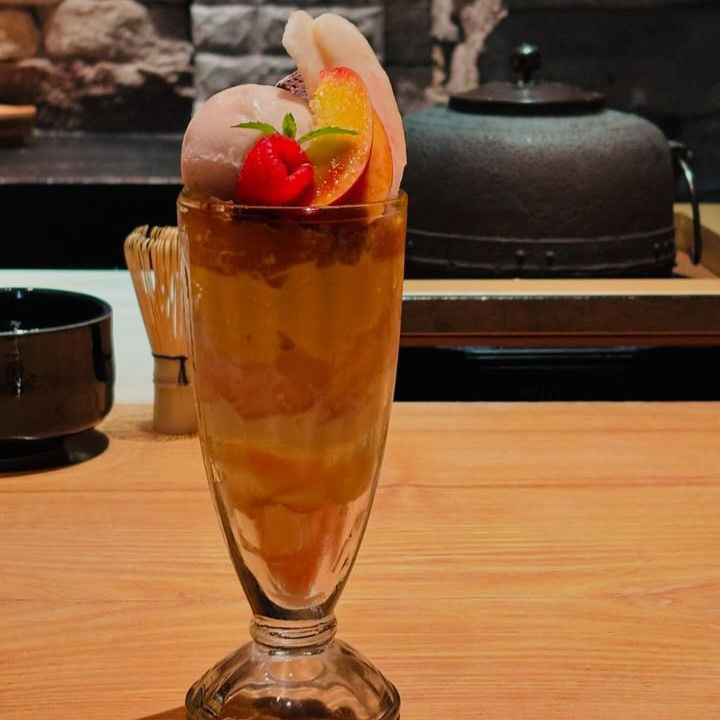Was the First Fruit Parlor in Japan in Kagurazaka’s "Taharaya" or Ginza’s "Sembikiya"?
- Shinya Yamada
- Sep 8, 2024
- 3 min read
Updated: Sep 24, 2024

Which Was the First Fruit Parlor in Japan?
It is commonly said that "Sembikiya" is the first fruit parlor in Japan, which serve parfaits and other fruit-based desserts. According to the website of Ginza Sembikiya, they opened Japan’s first fruit parlor, "Fruit Parlor," on April 7, 1913. However, there is another theory that Kagurazaka, Shinjuku, was the birthplace of Japan’s fruit parlor culture.
Taharaya in Kagurazaka May Have Been the First Fruit Parlor in Japan
A book published in 1951 titled "Tokyo Fubutsu Meibutsushi" (Tokyo Cultural Landmarks) by Keiji Isurugi (岩動景爾) mentions that Taharaya, located in Kagurazaka, became a fruit shop around 1907. At the end of the Meiji era (1912), they were the first to open a fruit parlor in Japan, and Sembikiya, Mansho, and Takano followed suit by also operating parlors. At the time, while ice cream generally cost 8 sen, Taharaya sold it for 15 sen, consistently maintaining a high-class reputation. Taharaya's French cuisine, which began in 1914, also became famous and attracted many food connoisseurs."
The end of the Meiji era refers to the year 1912. If this record is accurate, Taharaya opened Japan’s first fruit parlor one year earlier than Ginza Sembikiya, which opened in 1913.
Taharaya Was a Restaurant Loved by Many Literary Giants, Including Natsume Soseki
Taharaya was located right next to Bishamonten Zenkokuji Temple, a central landmark in Kagurazaka. Many famous writers, including Natsume Soseki, Kikujiro Kanda, and Nagai Kafu, frequently visited Taharaya. It even appeared in some of Natsume Soseki’s novels. Unfortunately, Taharaya closed its doors in 2002. I moved to Kagurazaka in 2000 and had the chance to dine there once, just before its closure.
Because of Taharaya's closure, we can no longer ask whether it was indeed the origin of fruit parlors. Therefore, it remains unclear whether Taharaya or Sembikiya started the first fruit parlor. However, given that Kagurazaka was one of Tokyo’s busiest areas during the Meiji (1868-1912) and Taisho periods (1912-1926), it’s not impossible that Taharaya was the birthplace of fruit parlors.

The Parfait: From France to Japan, an Evolution in Dessert Presentation
Incidentally, the iconic dessert served at fruit parlors, the parfait, originally came from France. The word "parfait" means "perfect" in French, referring to the "perfect dessert." In France, a parfait is a frozen dessert made by mixing egg yolks with sugar and whipped cream, served with sauces or fresh fruit. The Japanese parfait is considered an evolved version of this dish. In France, parfaits are served on plates, while in Japan, they are served in tall glass dishes, creating a completely different presentation.

The Sundae: A Simpler, More Modest Alternative to the Parfait
A similar dessert, the sundae, originated in the United States. Compared to parfaits, sundaes are often simpler, smaller, and more casual. There’s a theory that sundaes were created to offer a more modest dessert on Sundays, as some people objected to the idea of indulging in extravagant parfaits on a day of rest.

Experience the Art of Parfait and Japanese Miniature Aesthetics at "Couches de bonheur"
In Japan, parfaits often include not only ice cream but also generous amounts of fruit, layered with toppings like cornflakes. The many layers of a parfait may appeal to the Japanese love for miniatures, similar to the aesthetics of Bonsai or Hakoniwa (miniature gardens).
At "Couches de bonheur", where we offer cultural experience tours, you can watch pastry chef Sayumi Ono, dressed in a kimono, craft the parfait right before your eyes. You can ask questions and take photos during the process. Additionally, you can enjoy a pairing of matcha, which you prepare yourself, with three carefully selected teas chosen by our tea sommelier to complement the parfait.
Why not visit "Couches de bonheur" in Kagurazaka, a place that might be the birthplace of fruit parlors, and experience the Japanese love for miniatures in a parfait?

Book Experience
How to Access Kagurazaka
The Kagurazaka area is conveniently located within 30 minutes from any major station in Tokyo. This is because Kagurazaka is situated in the heart of Tokyo, at the center of the Yamanote Line. Please come and visit this convenient and charming Kagurazaka.








Comments